 Art Deco Mumbai Trust
Art Deco Mumbai TrustIt was at a landmark architecture exhibition in Paris in 1925 that the Art Deco aesthetic first exploded on the scene.
In the 100 years since, the glamorous building style – evocative of neon-lit jazz bars and the golden age of big motion pictures – rapidly spread around the world.
It moved from the famous pastel hotel facades of Miami’s South Beach to the sprawling necklace of mansion apartments along Mumbai’s Marine Drive seafront.
Art Deco’s distinct motifs – typified by geometrical ziggurats (step towers), sweeping curves, sunburst designs, nautical elements and circular or turreted rooftops – symbolised an unequivocal break from the past, celebrating the dawn of a new, unabashed, post-war 20th Century modern age.
In a short time, the style transcended architecture to influence the design sensibility of home interiors, furniture, fonts, jewellery and some of the world’s most iconic cinema halls – from Radio City Music Hall in New York City to Regal, Liberty and Eros cinemas in Mumbai.
“It represented hope, optimism and speed, coinciding with the emergence of the motor car and also concrete as a building material, which when compared with stone, could be worked with in a tenth of the time and fifth of the cost,” Atul Kumar, founder of the Art Deco Mumbai Trust and curator of a new exhibition celebrating the centenary of Art Deco in the city, told the BBC.
“It was not elaborate like Victorian Gothic design that preceded it, and came with a classicism and simplicity that has survived the test of time,” he said.
And nowhere has that been more apparent than in Mumbai, which, according to Mr Kumar, is home to the world’s largest documented collection of Art Deco buildings. Other estimates put Mumbai in the second spot behind Miami.
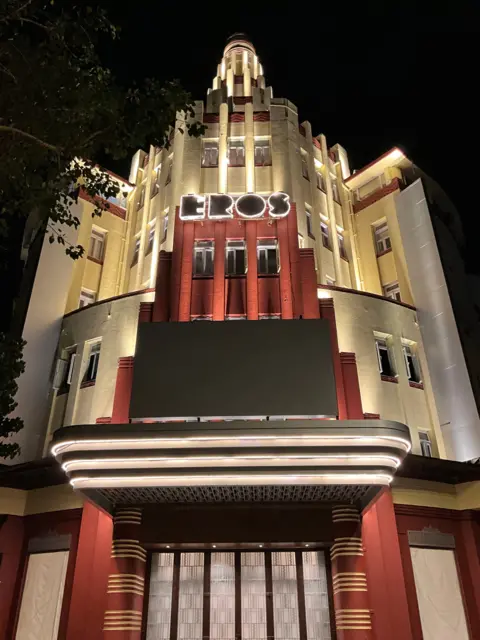 Art Deco Mumbai Trust
Art Deco Mumbai Trust Getty Images
Getty ImagesWhat made Mumbai’s tryst with Art Deco particularly interesting was how the city embraced its hallmarks in a truly all-encompassing manner.
Just like Miami, the style emerged in the city at a time of economic flux and transformation, spurred by its modern, mercantile port-city energy.
But unlike Miami where it “arrived as a projection of leisure or spectacle”, in Mumbai the “style resonated across various building typologies, including schools, cinemas, bungalows, petrol stations and banks,” Mr Kumar said.
Art Deco buildings in Mumbai were, and still often are, hidden in plain sight, with even their occupants often blissfully unaware of their cultural moorings.
But their all-pervading architectural shadow over the city is perhaps why Art Deco is “seeped into the larger public imagination, and remains relevant in Mumbai’s emotional quotient”, Mr Kumar added.
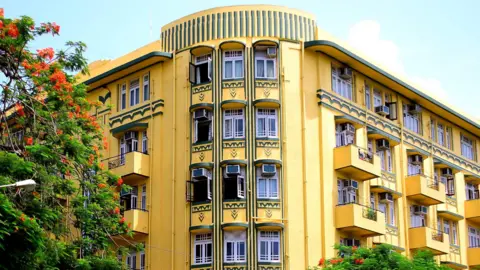 Art Deco Mumbai Trust
Art Deco Mumbai Trust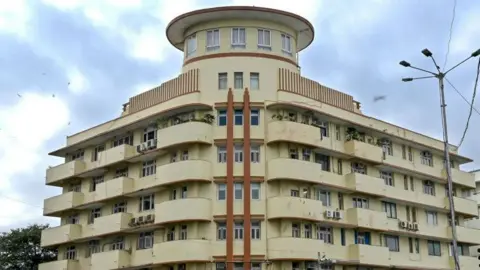 Getty Images
Getty ImagesThe style was brought to Mumbai at a time when it was under colonial rule.
It was India’s first bunch of home-grown architects – pivotal figures like Chimanlal Master, Laxman Vishnu Sathe and Gopalji Mulji Bhuta – who integrated it into their designs after returning home with degrees from the Royal Institute of British Architects in London.
“They were suddenly exposed to new European sensibilities and wanted to bring them back to their country, which was deeply colonised by the imposition of Victorian buildings,” Mr Kumar said.
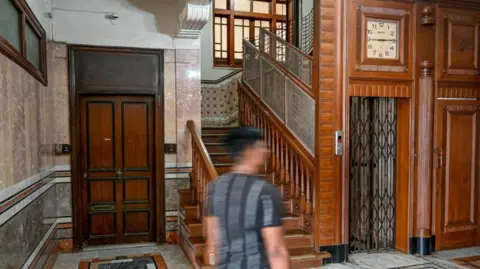 Getty Images
Getty Images Moorthy’s Furniture
Moorthy’s FurnitureBut they adapted Art Deco and vernacularised it, throwing in native design patterns, drawing inspiration from disparate local elements including ocean liners docked at Mumbai’s ports and even lattice screens that are so typical of Mughal architecture.
The British were initially dismissive, calling Art Deco “lesser architecture”, but were presumably threatened, said Mr Kumar, as it signalled the dawn of a new age and of new identities that were shaping India’s public spaces.
It was only a matter of time before South Mumbai’s skyline would become a rich confluence of Indo-Saracenic, Gothic and Art Deco buildings.
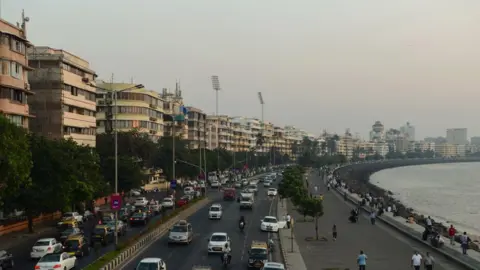 Getty Images
Getty Images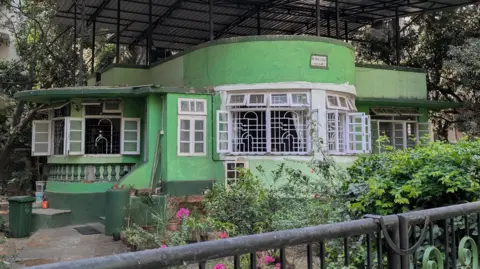 Art Deco Mumbai Trust
Art Deco Mumbai TrustToday, Mumbai is yet again a city in rapid flux – its building code governed by real estate moguls trying to maximise the floor space index, giving way to utilitarian rather than stylistic considerations.
Dozens of Art Deco buildings have been erased to give way to glass and steel facades, and hundreds more are under threat.
Over the past decade, Mr Kumar has documented more than 1,500 buildings that are truly representative of the style, but only 70-odd of those are protected.
Authorities are apathetic to their preservation, so his organisation is engaging directly with people, offering pro-bono repair and restoration consultancies to prevent them from giving away their properties to builders for redevelopment.
“The response has been positive as people have seen the value of their real estate go up after the renovations,” said Mr Kumar.
Then there are others, like architect and designer Nidhi Tekwani, who is re-imagining Art Deco objects and hoping to adapt them for a contemporary context.
For example, Art Deco furniture was often bulky, its light fittings were meant for high ceilings, and its dressing tables too elaborate for today’s compact apartments. Ms Tekwani aims to design and launch products that are sleeker while preserving core Art Deco principles.
“The hope is to translate it to something modern and well-fitting of our current lifestyle requirements,” said Ms Tekwani of her efforts to keep Art Deco a living tradition in a city that’s remaking itself between one blink and the next.
Follow BBC News India on Instagram, YouTube, X and Facebook.

